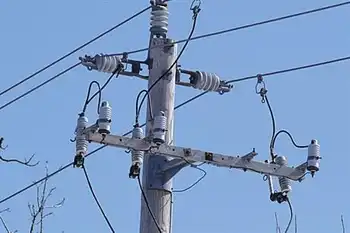Ottawa invests in New Brunswick wind farm
Rob Moore, Member of Parliament for Fundy Royal, on behalf of the Honourable Lisa Raitt, Minister of Natural Resources, announced support for the Kent Hills Wind Farm through an investment of $29 million under the ecoENERGY for Renewable Power Program.
"This investment strengthens our goal of ensuring that more clean, renewable energy is delivered to Canadians at competitive prices," said Mr. Moore. "Not only will this wind farm help protect our environment, but this green energy technology will also help stimulate the economy and create jobs for Canadians."
The 96 megawatt Kent Hills Wind Farm is located 30 kilometers from Moncton, in Albert County. The wind farm is the first to begin commercial operation in New Brunswick and will provide approximately 290,000 megawatt hours of electricity per year from 32 turbines. This electricity will be sold to New Brunswick Power to meet the needs of over 17,000 homes.
The $1.48 billion ecoENERGY for Renewable Power Program provides a one cent per kilowatt-hour incentive for up to 10 years. The goal of the program is to increase Canada's supply of clean electricity from renewable sources such as wind, biomass, low-impact hydro, geothermal, solar photovoltaic and ocean energy. It will encourage the production of about 4,000 MW of new electricity from renewable-energy sources - enough emissions-free electricity to power about one million homes.
An additional $2.4 billion is provided by Canada's Economic Action Plan to support a cleaner and more sustainable environment and help meet Canada's climate change objectives. This funding includes a new, five-year, $1-billion Clean Energy Fund and a $1-billion Green Infrastructure Fund.
Related News

US Electricity Market Reforms could save Consumers $7bn
WASHINGTON - Electricity-market reforms to enable more renewables generation and storage in the Midwest, Great Lakes, and Mid-Atlantic could save consumers in the US and Canada more than $6.9 billion a year, according to a new report.
The findings may have major implications for consumer groups, large industrial companies, businesses, and homeowners in those regions, said the Wind-Solar Alliance, (WSA), which commissioned the Customer Focused and Clean report.
The WSA is a non-profit organisation supporting the growth of renewables. American Wind Energy Association CEO Tom Kiernan is listed as WSA secretary.
"Consumers are looking for clean, affordable and reliable energy that will keep…




